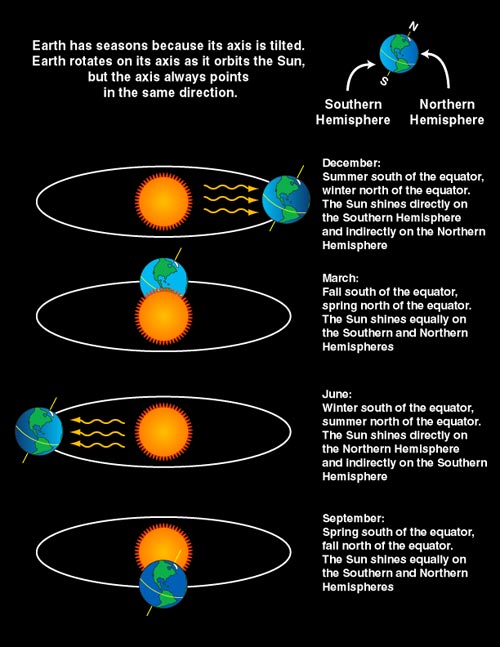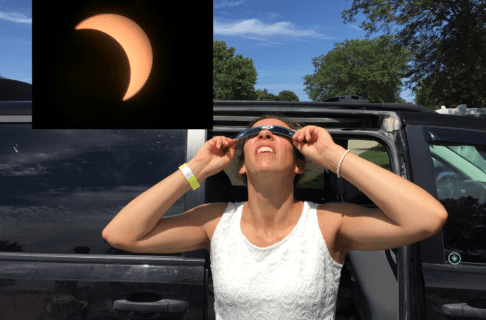Posted on: Friday April 3, 2020
By Science Communicator Claire Woodbury
Welcome to spring! Or at least it’s supposed to be… astronomers tell us that spring in the northern hemisphere began on March 19, but with all this snow, it looks more like Winter 2.0. Why do seasons on the calendar not quite match up with seasons in the weather and why are we colder in winter anyway?
You probably know that the earth’s revolution around the sun causes the seasons. So here’s a question for everyone, when it’s winter in Manitoba, where is the earth in relation to the sun? Is it closer to the sun or farther away?
During a Manitoba winter, the earth is actually closer to the sun then in summer! Whaaaaat!? It is a common misconception that the earth is farther away from the sun in winter and closer to the sun in summer.
How does it work then? Well, it’s not about whether a planet is closer or farther from the sun, but whether it is tilted away or towards the sun.

The Earth is spinning on its axis, kind of like a top or a Beyblade. But it’s not spinning directly “up and down” relative to its orbit around the sun: it’s on a slight angle, about 23.5°. This means that as Earth travels around the sun, one hemisphere is tilted towards the sun while the other is tilted away.
In the summer the Northern Hemisphere is tilted towards the sun and receives more sunlight directly.
The sun’s rays are a form of energy that provides us with light and heat. The direct line of the sun during summer gives us optimal growing conditions with lots of light and heat. Plants need sunlight in order to create their food as well as warm temperatures so they don’t freeze. And in turn animals have food to eat and habitat to live in. (And humans get to hit the beach) Along with that light and heat there is also energy we can’t see in the form of ultraviolet radiation. This kind of energy is what causes people to get a suntan or burn.
In the winter, the Northern Hemisphere is tilted away from the sun, so it receives sunlight less directly. We get colder temperatures and less U.V. radiation. While the Northern hemisphere is experiencing winter, the southern hemisphere is experiencing summer and vice versa. If you live near the equator, you’re pretty much experiencing direct sunlight all year round and so have more stable warm temperatures.
Image: NASA
This brings us back to our question, when does winter stop and start anyway?
The calendar says winter starts around December 21, the winter solstice. The winter solstice is when we have the least amount of daylight and therefore the shortest “day”. We get a short day because we are angled the farthest from the sun and the sun appears very low in the sky for only a few hours.
Here in Manitoba it feels like winter starts in October and goes through to March (or even to May!) Depending on where you live, the coldest part of the year doesn’t always fall directly when astronomical “winter” falls on the calendar. That’s because the calendars we use today are based on ones made in ancient Rome, which is surrounded by water. Water absorbs a lot of heat and releases it slowly, keeping temperatures very mild. In ancient Rome, the coldest part of the year really didn’t start until the Winter Solstice. Here in Manitoba we don’t have the moderating effect of the Mediterranean Sea, so we usually have more extreme differences between summer and winter.
For more fun with seasons see “Why Seasons Make No Sense” from PBS on YouTube:
To see what stars and planets are up in the sky during each season see the Astronomy blog for monthly Manitoba Skies updates.





